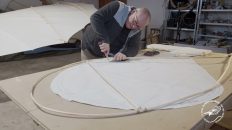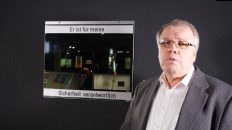In the series »The Art of…« ZKM invites artists from the collection to talk about topics of their choice. With Manfred Mohr (*1938, Pforzheim), an artist has accepted the invitation who left traditional painting at the end of the 1960s in order to investigate the essence of the creative process by means of computer and to thereby arrive at new, complex forms.
Manfred Mohr is one of the world’s best-known pioneers of digital art, who made history with the solo exhibition »Computer Graphics. Une ésthétique programmée« at the Musée d’Art Moderne de la Ville de Paris in spring 1971.
When Mohr decided in 1969 to exchange brush and canvas for computer and plotter, artists and art critics reacted with astonishment. Much had been reported in the press about the new technology since the 1950s, yet the computer was far from being a medium familiar to the public. For what reason should a painter who had successfully established himself in the Paris art world leave everything behind to explore the possibilities of this technology for the arts?
The conversation is devoted to the artist’s journey from the tachist beginnings of his student days, hard-edge painting to generative art. How was he influenced by the painter K. R. H. Sonderborg? What was the role of philosopher Max Bense, who promoted a rational art of „technical existence,“ or of the composer Pierre Barbaud, who was one of the pioneers of computer-generated composition in France? Manfred Mohr’s work invites a conversation about jazz, serial music, information aesthetics, technical imagery, meteorology, n-dimensionality and the fascination of generative thinking.
More information: ZKM




